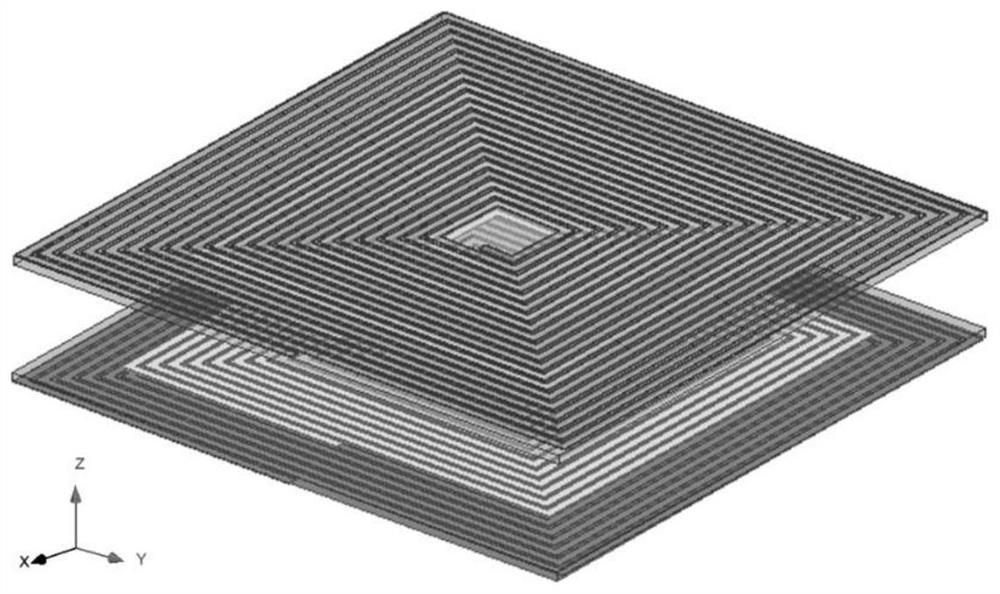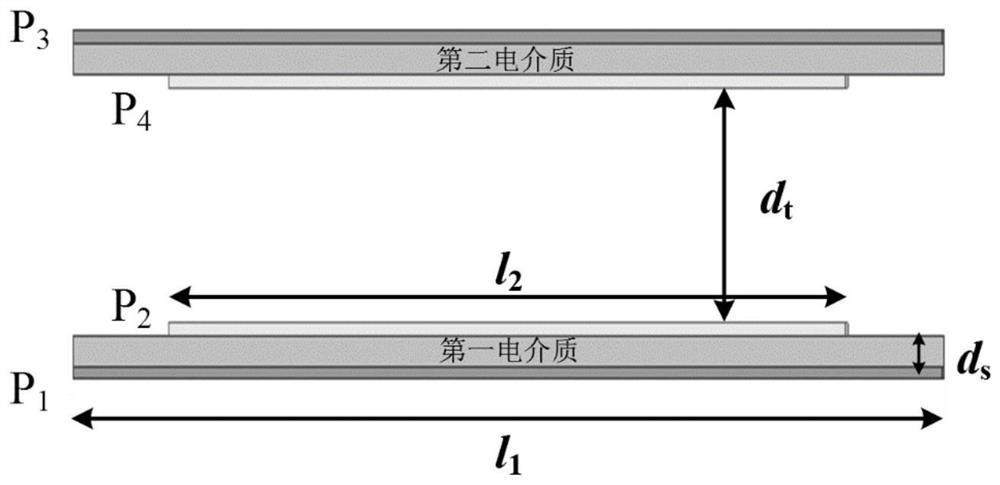Integrated electromagnetic coupling mechanism and electric energy transmitting end, receiving end and transmission system thereof
An electric energy transmission system and electromagnetic coupling technology, applied in the field of electromagnetic coupling, can solve the problems of increased system volume and weight, reduced system power density, increased system cost, etc., to increase the electric field coupling coefficient, reduce ohmic loss, and overcome the impact Effect
- Summary
- Abstract
- Description
- Claims
- Application Information
AI Technical Summary
Problems solved by technology
Method used
Image
Examples
Embodiment 1
[0051] An integrated electromagnetic coupling mechanism provided by an embodiment of the present invention, such as Figure 1~3 As shown, in this embodiment, it is different from the coils wound with Litz wire in the previous research on the IPT system, and it is also different from the use of metal plates as electrodes in the previous research on the CPT system. The electromagnetic poles in this embodiment use a Square metal wires of a certain width (copper foil strips are used in this embodiment) are spirally wound, which can not only ensure the self-inductance value of the coil itself and the mutual inductance value between the coils, but also increase the cross-coupling capacitance between the electromagnetic poles , to increase the electric field coupling coefficient, and to improve the quality of power transmission by making full use of the coil parasitic capacitance characteristics that were neglected in previous studies. in figure 1 The three-dimensional diagram of th...
Embodiment 2
[0055] 1. System circuit model and its equivalent simplification
[0056] This embodiment provides a power transmission system with an integrated electromagnetic coupling mechanism. In order to save cost and simplify the circuit, this embodiment utilizes the capacitance and inductance characteristics of the integrated electromagnetic coupling mechanism described in the embodiment, and adopts a non-compensated structure. At the same time, in order to further simplify the system structure, a half-bridge inverter circuit is used, such as Figure 5 As shown, the first inner electromagnetic pole P of the stacked coupling mechanism in the figure 2 The terminal with the same name is connected to the high potential terminal of the inverter output, the first external electromagnetic pole P 1 The opposite end of the inverter is connected to the low potential end of the inverter output to reduce leakage electric field radiation.
[0057] In order to simplify the analysis, this embodim...
Embodiment 3
[0129] Based on Embodiment 2, this embodiment provides a power transmitting end of an integrated electromagnetic coupling mechanism, which can be installed in a power transmitting device, and is provided with a half-bridge inverter circuit and an electromagnetic pole at the transmitting end. The half-bridge inverter circuit That is, the half-bridge inverter circuit in the system described in Embodiment 2 is adopted, and the electromagnetic pole at the transmitting end adopts the first outer electromagnetic pole P described in Embodiment 2. 1 , the first inner electromagnetic pole P 2 , while about the first outer electromagnetic pole P 1 , the first inner electromagnetic pole P 2 More specific parameter design can be consistent with Embodiment 2, and can also be set according to specific application requirements.
[0130] It should be noted that the power transmitting device, equipment, etc. including the power transmitting end are also included in the implementation scope o...
PUM
 Login to View More
Login to View More Abstract
Description
Claims
Application Information
 Login to View More
Login to View More - R&D
- Intellectual Property
- Life Sciences
- Materials
- Tech Scout
- Unparalleled Data Quality
- Higher Quality Content
- 60% Fewer Hallucinations
Browse by: Latest US Patents, China's latest patents, Technical Efficacy Thesaurus, Application Domain, Technology Topic, Popular Technical Reports.
© 2025 PatSnap. All rights reserved.Legal|Privacy policy|Modern Slavery Act Transparency Statement|Sitemap|About US| Contact US: help@patsnap.com



